
|
 |
 |
A few random objects and a collection of colored paper are displayed. The colored papers are labeled with their colors: the additive primary colors R, G, B, and the subtractive primary colors Y, C and M.
Four buttons allow you to illuminate these with White light, or with any of the three additive primary colors, Red, Green and Blue lights
When light illuminates an object, the quality of the diffuse reflected light depends both on the color of the illuminating light and of the color of the object.
What can you do in this exhibit:
1) Press the four buttons one at a time and observe the result of illuminating the additive primary color papers with the four lights.
A primary color paper can only reflect diffusely a light of its own color. When it is illuminated with a light of a different color, no light is reflected.
For example:
a) White Light in a Green Paper
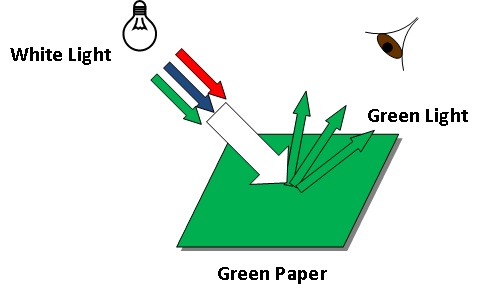
b) Green Light in a Green Paper
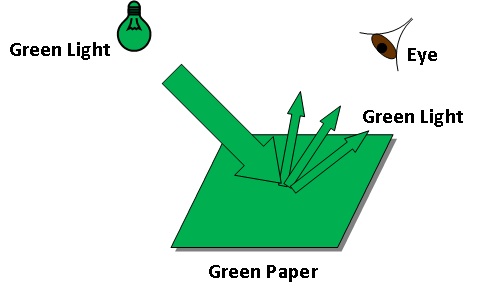
c) Blue Light in a Green Paper
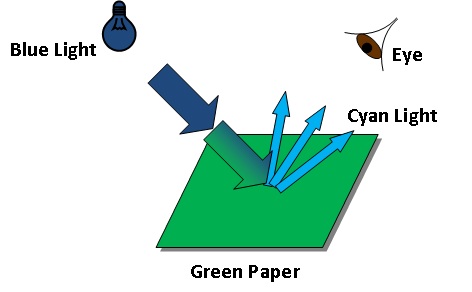
d) Red Light in a Green Paper
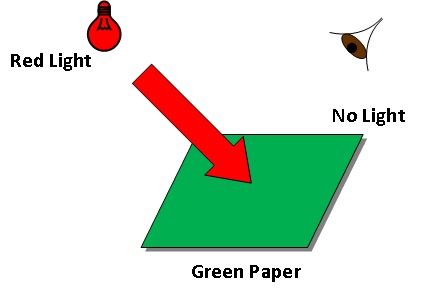
2) Press the four buttons one at a time and observe the result of illuminating the three subtractive primary color papers with the four lights.
Subtractive colors are formed by the sum of two primary additive colors:
C=B+G, missing R
M=B+R, missing G
Y=R+G, missing B
A subtractive color paper can reflect diffusely light with one of its two colors components. When it is illuminated with a light of the missing color, no light is reflected.
For example:
a) White Light in a Cyan Paper
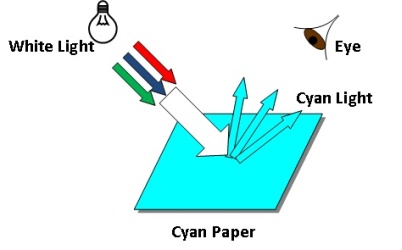
b) Green Light in a Cyan Paper
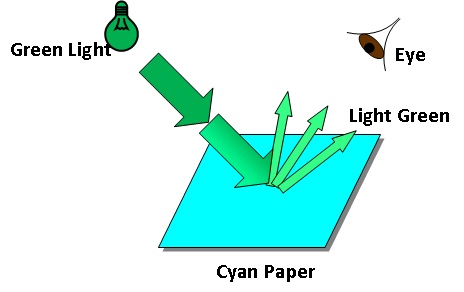
c) Blue Light in a Cyan Paper
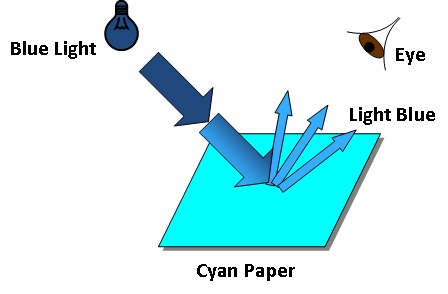
d) Red Light in a Cyan Paper
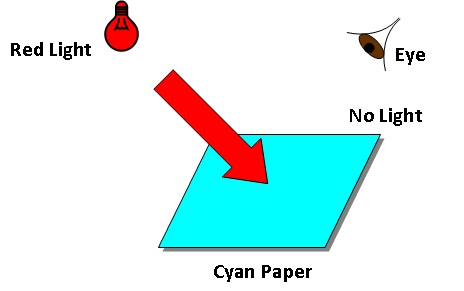
3) Color is a sensation. When light illuminates an object, the diffuse reflected light enters your eyes, it interacts with the color receptors in your retina, and these in turn send a message to your brain.
When viewing familiar objects such as landscapes or faces, the response of the brain is sometimes surprising. This is due to the phenomenon of color constancy. “Color constancy is the constancy of the perceived colors of surfaces under changes in the intensity and spectral composition of the illumination.”